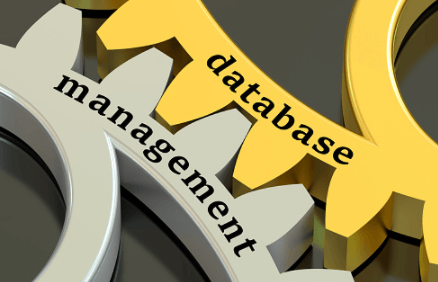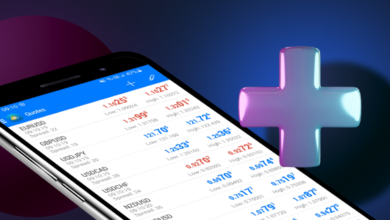What is database management?

A collection of data that represents some attribute in the real world is called a database. A database system is thus a specific populated and built database containing data required for a particular task.
DBMS or Database Management Systems:
So what is the DBMS? DBMS or a Database Management System contains the software and the retrieved and stored users’ data with sufficient security measures. It typically has a set of programs required for database manipulation. The DBMS also instructs the Operating System to provide specific data and accepts a data request from the application. In larger DBMS systems, third-party software and user data can also be retrieved or stored. The DBMS is normally built as per user requirements. Hence, the “DBMS” term means the interface between application and data and includes the DBMS and user software.
DBMS Example:
Consider the example of a university and its database. This will have all information or data on courses offered, students enrolled, grades scored, etc. Assume its database has 6 files over which data is organized as shown below.
- The data of each student and student enrolled in the STUDENT file.
- The data of every course conducted by it is in the COURSE file.
- The data about course sections of a specific course is in the SECTION file.
- The student grades earned are in the different sections in the GRADE file.
- The information about each tutor or professor is in the TUTOR file.
Hence the DBMS requires that you first define the data elements and their types. This is then stored on a record. The values of a data element can also be coded. The DBMS above has 6 tables with a key-value attached amongst all the other tables, files, etc., in the DBMS. You can easily retrieve the University file and ask the program to present data labeled 4 or the GRADE file.
Before we delve into a Database Management System or DBMS, let’s understand what a Database is? A database is a collection of related data that represents some attributes in the real world. Therefore, a database system is specifically populated and built to contain data that is required for a specific task.
DBMS Characteristics:
A Database Management System has certain characteristics. Namely
- It removes redundancy and provides security of its self-describing data elements.
- Insulation of data abstraction and programs that can support data in multiple views and data manipulation in parallel.
- Sharing of multiuser transaction processing on its data in the form of tables.
- Typically it has elements of ACID- Atomicity, Consistency, Isolation, and Durability.
Flat File Vs. DBMS:
Flat files like Word, Excel, etc., work well when the DBMS system is too expensive or too big for the data. Here’s a table of the flat file versus a DBMS.
| DBMS | Flat File Management System |
| Multi-user access | Single-user access |
| Suits large and small businesses | It suits a limited and smaller DBMS system. |
| Removes integrity and redundancy issues. | Integrity and redundancy issues are present. |
| Expensive, though the Cost of Ownership in the long-term is cheap. | It’s cheaper |
| Can implement complex transactions | Complex transactions not supported. |
DBMS Users:
A DBMS system has the following users.
| Component Name | Task |
| Application Programmers | They write programs to interact with databases in programming languages. |
| Users | These interact with the DBMS and conduct database operations like data retrieval, deleting, updating a file, etc. |
| Database Administrators | They manage the DBMS system and hence are called DBA- Database Admin. You can become one too with an MBA in DS (JAIN). |
Examples of DBMS uses:
Here are some database system applications in varied sections of daily life:
| Sector | Use of DBMS |
| Banking | For customer account and information, deposits, payments, loans, etc. |
| Airlines | For flight schedule and reservation information. |
| Universities | It helps with course registrations, student information, college affiliations, and grades obtained. |
| Telecommunication | For storing details like call records, monthly bills, maintaining balances, etc. |
| Finance | It stores information on shares, bonds, sales, stock, purchases, and more. |
| Sales | It is used for storing products, customer details, sales information, etc. |
| Manufacturing | It is used in supply chain management, production tracking, the status of inventories/warehouses, etc. |
| HR Management | It stores information on salaries, employees, deductions, payroll, paycheck generation, etc. |
DBMS Types:
There are 4 types of Database Management Systems. They are
- Network database
- Object-Oriented database
- Hierarchical database
- Relational database
Network DBMS Model: This model allows each child to have multiple parent elements. Thus in complex models, you can explain the need for complex relationships described as parts/ orders many-to-many relationships where the entities in the graph can be accessed using many paths.
Object-Oriented Model: In an object-oriented DBMS, data is normally stored as objects contained in the class, which is an element of the system structure. The object collection in a class has both member value and operations allowed data.
Hierarchical DBMS: Here, the data model has a tree-like hierarchical structure, either top-down or bottom-up, in which the parent-child relationship is exhibited. In such a DBMS, the parent record may have several children records and not vice versa.
Relational Model: This widely used DBMS model uses normalized data in the tables, columns, and rows. The operations and relationships in the fixed structures use SQL for manipulation.
Popular Software
Below is the popular software list used in a DBMS system:
- Microsoft Access
- My SQL
- PostgreSQL
- Oracle
- dBASE
- SQLite
- FoxPro
- IBM DB2
- MariaDB
- LibreOffice Base
- Microsoft SQL Server etc.
Merits and Demerits of a DBMS:
The merits are that the DBMS offers
- A variety of uniform techniques to efficiently retrieve, administer and store data
- An efficient handler of multiple applications working on the same data
- The programmers are not exposed to storage or data representation details.
- Offers security and data integrity with only one user accessing its data at a time.
- Application Development Time reduction.
DBMS demerits are
- Software and Hardware costs are high.
- User training is required to use complex databases.
- If using a single database, the chances of data being corrupted or lost are quite high.
- Data loss can occur due to multiple user access to the DBMS.
- It cannot make complex calculations.
Conclusion:
Organizations need database management systems to handle the vast amount of data that is generated continuously. DBMS helps to store, organize and retrieve data as and when required. These requirements have also led to an increase in the demand for management professionals. Getting online management training from Great Learning can help you upskill and take advantage of these opportunities. Management professionals are well trained in these practices and in guiding the organizations.








